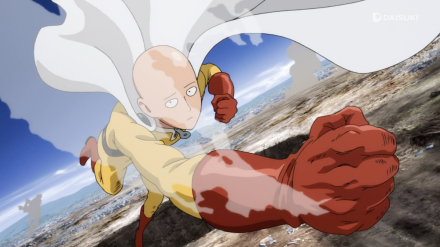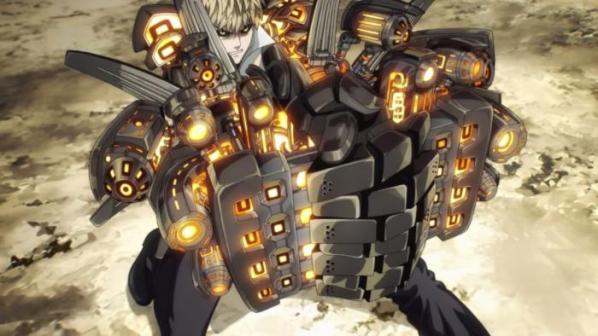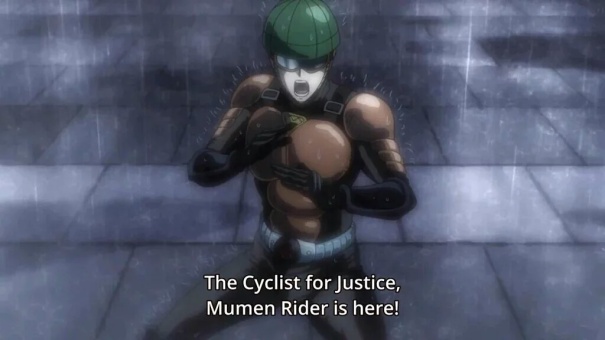Chances are that if you were linked here from another blogger pal, then you might be new. To those first-timers, “Hi, I’m Takuto, welcome to my anime cafe!” For the OWLS blog tour’s tenth monthly topic for 2018, “Grotesque,” I wanted to revel in the spooky fall festivities by cross-examining an unconventional magical girl throwback from 2016 with humanity’s intriguing obsession for death and the macabre. As someone interested in human behavior, it’s a fascinating area to study, and hopefully I’ll be able to make some science out of the magical!
In honor of Halloween, we will explore what we find vile and ugly in pop culture. For this month’s topic, OWLS bloggers will be exploring characters or aspects of the grotesque in a piece of media and how it is a metaphor or allegory for society, human nature, or some other philosophical or humane idea.
Heads-up! This post will dabble more into studying the human condition than evaluating the series itself. My personal thoughts? It’s a twisted little title with an engaging battle royale setup that turns out somewhat lackluster in the end but is still stupidly entertaining. Watch it. I liked it, and seeing as how we seem to be irresistibly drawn to that which is gruesome (even if for no apparent reason), you should like it to, right? riGhT??
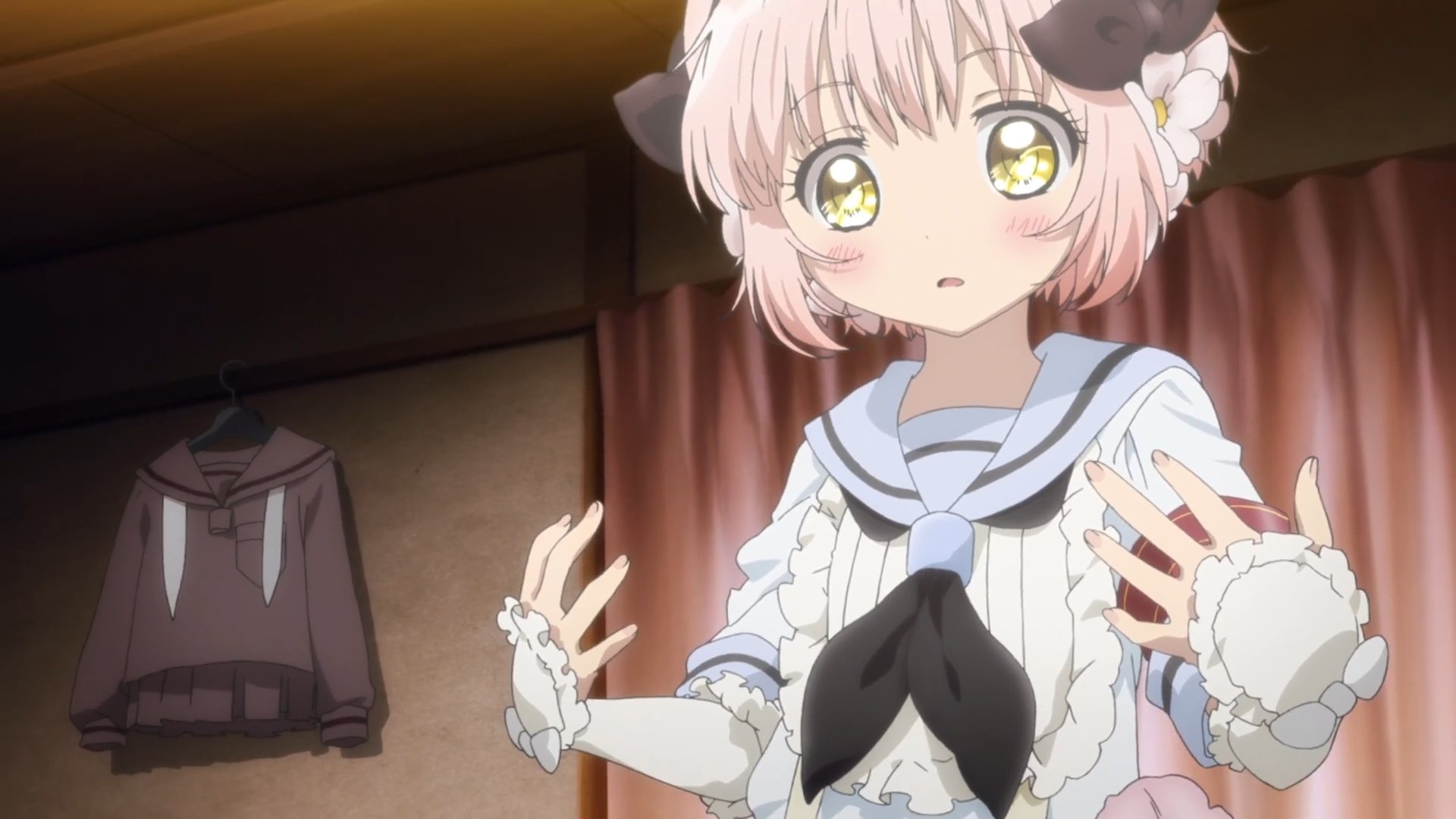
A brief, spoiler-free discussion on the 12-episode fall 2016 anime “Magical Girl Raising Project,” animated by Lerche, directed by Hiroyuki Hashimoto, and based on Asari Endou’s light novel series of the same name. This will also include a light historical context analysis on how pop culture and the media make a spectacle of death and gore.
Again, this will be SPOILER-FREE, so enjoy!
“You’ve been selected to become a magical girl, pon!”
Magical Girl Raising Project. It’s the latest fad to dominate the mobile game sphere, and it seems that every young girl and adult woman alike in N-City can’t seem to stop playing the app game. Jumping into combat with your sparkly avatar, beating up shadow beasts, collecting candies—it’s the closest thing they have to being a real life magical girl! For Koyuki Himekawa, however, the app offers more than a mere simulation. One day, she receives a peculiar notification from Fav, the game’s mascot, saying that she has been selected to become a real magical girl. Unknowing the full implications of their contract, she eagerly accepts the offer to become her adorable in-game avatar Snow White.

Gifted with the ability to transform at any time, Koyuki viewed her new life with a newfound optimism and excitement. That is, until the game admins sent out a startling notification claiming that “the number of magical girls in this region must be halved,” as the system couldn’t support the whopping 16 players who decided to take on the magical mission. The one to collect the least amount of Magical Candies—which are awarded for their magical girl activities—at the end of each week will lose their powers. But when a real-world tragedy befalls the first player to drop out, they find that their powers aren’t the only thing stripped from them.
As the magical girls perilously try to avoid their fate by cheating on their fellow players and throwing one another under the bus, the enigmatic Fav continues to add more twisted rules, forcing these young hearts to realize that what started off as a shining opportunity to help others has become a desperate struggle for their own lives.
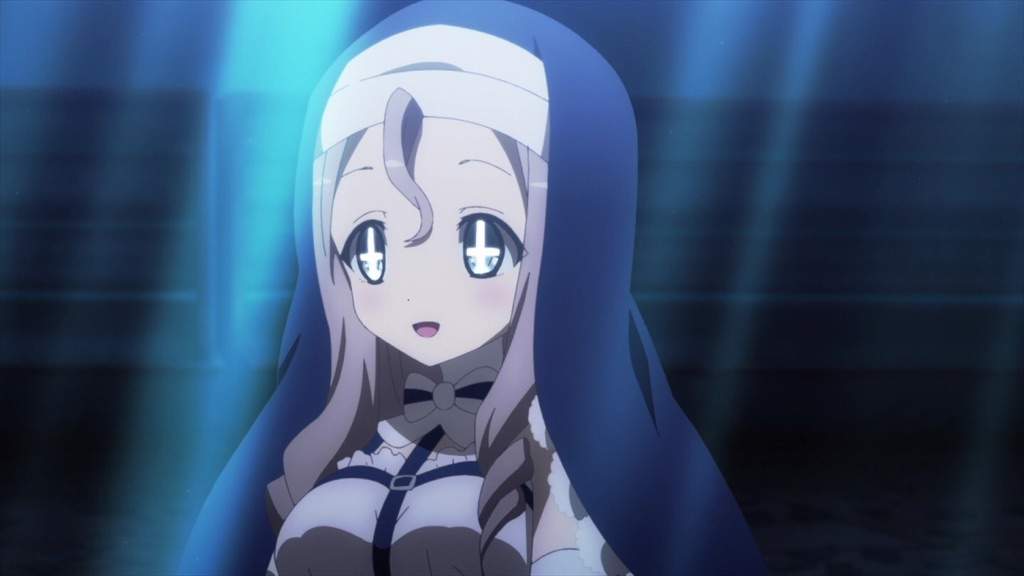
I’ll be frank with y’all: the story suffers largely from its systematic approach to execution and trying to develop its immense cast within 12 short episodes. While not Juni Taisen levels of predictability (God, that show disappointed me so much), you can pretty much tell who’s gonna go next based on the placement of their backstory. Ahh yes, the it’s the typical “Here I am and now I’m gone!” approach to character writing. In the instances where the show is able to catch you by surprise, however, those are the thrilling moments when the entertainment value shines through. Call it underdeveloped, or rushed, or even lackluster at times (I mean, the ending could’ve at least been more intense), but to call it “boring” would be a great underestimation of its twisted imagination and off-the-walls fun characters.
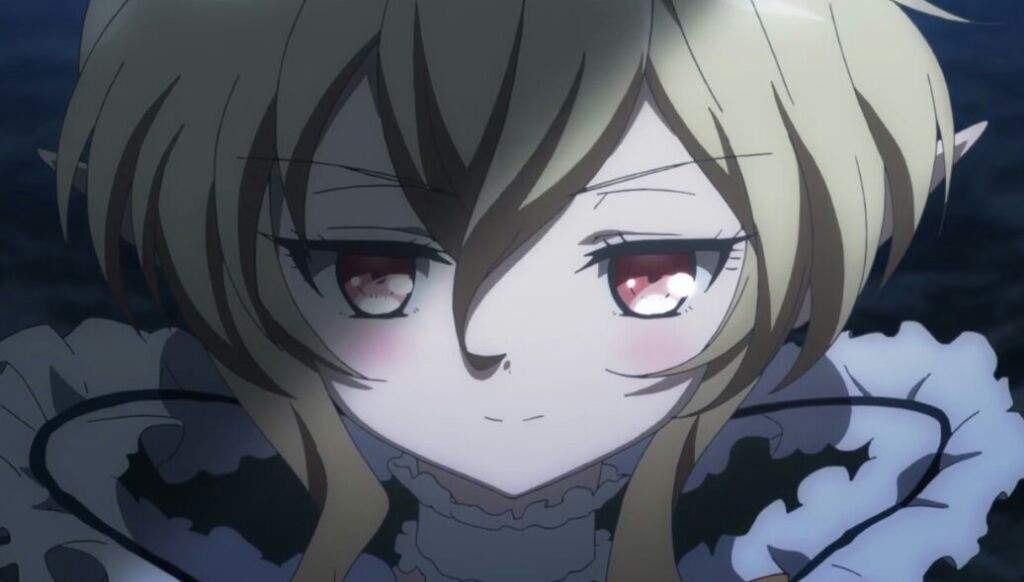
From Wild-West to the Wicked and the Blessed
I can guess what stood out to you most—16 characters, right? Yeah, even for a battle royale that’s quite the large ensemble. Like they did with Danganronpa: The Animation and Assassination Classroom, Lerche was able to communicate the variety of personalities through unique dialogue patterns and intricate character designs. One of my fiendish favorites, the brazen and dangerous Calamity Mary, for instance, dons wild-west gunslinger apparel (boots, spurs, hats, tassels, leather, cow print, you get the picture). In the English dub, Mikaela Krantz even voices her with a low syrupy tone and a heavy southern accent. While I may not remember the specifics of her life before becoming a magical girl (as these important backstories are often rushed through in a couple minutes before their untimely demise), I will remember who she was and how she acted based on the distinctive character designs.
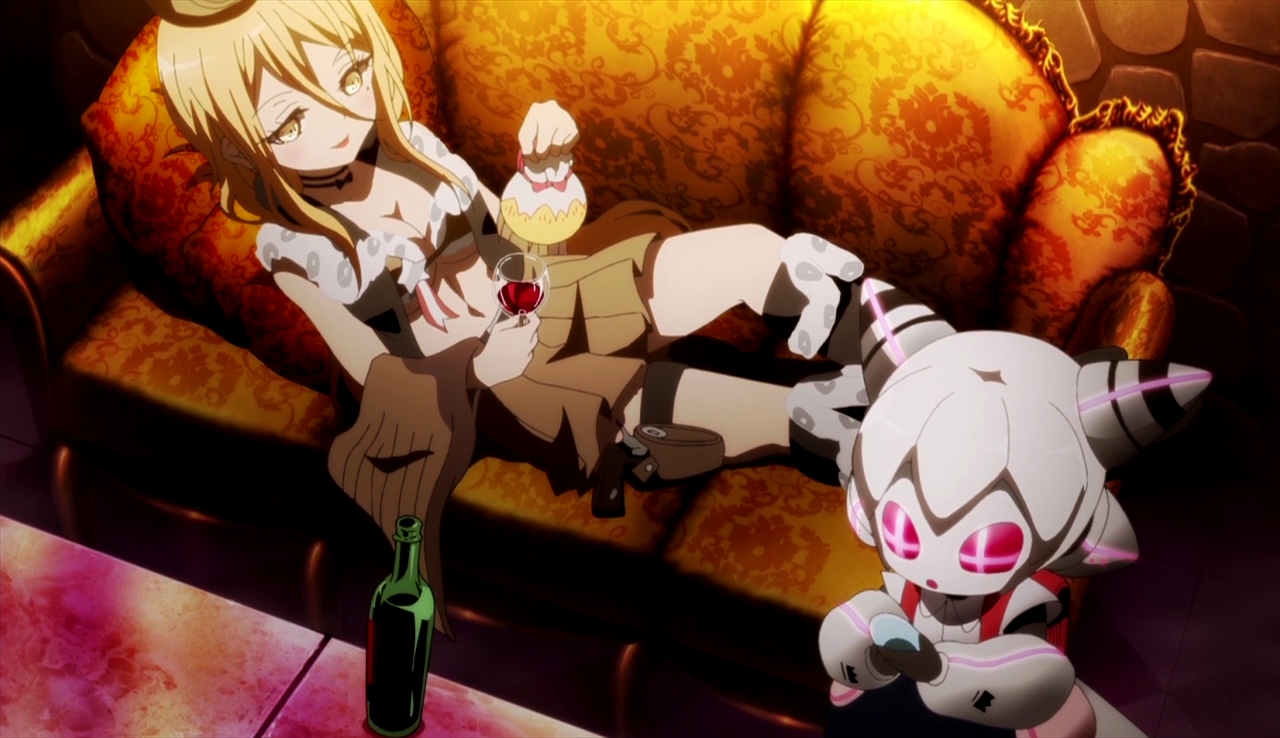
A good pal of mine and genius essayist Irina wrote about my other favorite magical girl, the almighty, all-knowing QUEEN Ruler in a neat character analysis that I absolutely loved. She vouches for the same opinion that I do, in that “Raising Project isn’t perfect by any means but it certainly isn’t shallow. The writing is on point in many aspects.”
Although some characters look more put together with a theme than others (looking at you Swim Swim), I really enjoyed the diverse cast of tropes interacting on the battlefield: the sparkly one, the innocent one, the queen, the twins, the cowgirl rebel, the ninja, the witch, the badass protector, the nun, and even the freakin’ ROBOT. Some last longer than others, and some go out with a bigger bang while others exit the stage silently. A huge criticism many people have about the series is that the deaths feel too structured—I mean, we all know that someone’s gotta go by the end of each week, and the anime is true to its word. What this creates is a lack of empathy towards most of the girls and ultimately a mere “meh” or “aww that sucks, I liked her” when they die. More than anything, the show plays off these deaths as thrilling over depressing, and that got me wondering:
When did we become so fascinated with torturing little girls in anime to the point where it has dominated nearly every magical girl title in recent times?
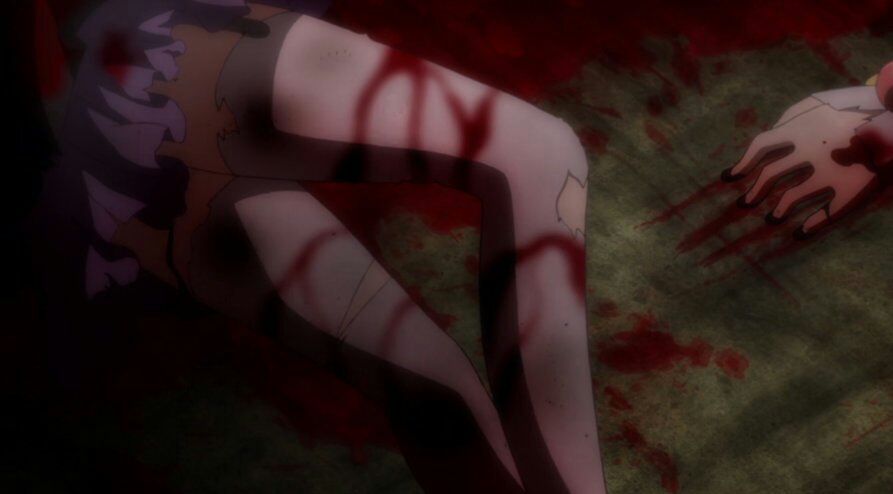
How Horror Works in the Mind
I took to Psychology Today for a bit of research on the topic, which led me to the article “Why Do We Like Watching Scary Films?” Briefly, it examines psychological horror at the cinema and how the genre works in the mind. When answering the question, author Mark D. Griffiths Ph.D. quotes Dr. Jeffrey Goldstein, a professor of social and organizational psychology at the University of Utrecht, in a 2013 interview for IGN:
“People go to horror films because they want to be frightened or they wouldn’t do it twice. You choose your entertainment because you want it to affect you. That’s certainly true of people who go to entertainment products like horror films that have big effects. They want those effects . . . Even though they choose to watch these things, the images are still disturbing for many people. But people have the ability to pay attention as much or as little as they care to in order to control what effect it has on them, emotionally and otherwise.”
That last bit especially got me interested. He claims that we are the ones who choose our entertainment, and that we also have the ability to let the content affect us (in this case potentially scare us) based on how much we care to pay attention to the film. And I can see this as true—if I were to attend a scary movie and cover my eyes half the time (which I wouldn’t go to in the first place cause I’m a wimp), my desire would be that the film frightens me as little as possible.
Now, would the same apply to the film maker(s)? I mean, the director is essentially the one deciding how much gruesome content to put in front of our eyes, so if a series were nothing but moments of shock value (interspersed with some touching backstories, of course), wouldn’t that be what the director also cares about most in the series? Maybe seeing Madoka Magica receive immense fame gave him the idea to go all-out with the suffering. Besides, what’s more shocking to us anime fans than watching cutesy moe girls get massacred? Once one series showed us it could be done, everyone else wanted to do it too.

A 2004 article in the Journal of Media Psychology by Dr. Glenn Walters proposes that “the three primary factors that make horror films alluring are tension (generated by suspense, mystery, terror, shock, and gore), relevance (that may relate to personal relevance, cultural meaningfulness, the fear of death, etc.), and (somewhat paradoxically given the second factor) unrealism.” In a 1994 study on disgust, college student participants found videos of real life horrors (like a cow slaughterhouse and a surgery involving removal of facial skin) to be incredibly disturbing. Yet many of these same individuals would think nothing of paying money to attend the premiere of a new horror film that had literally ten times more blood than what was present in the real-life documentaries! Why is that? It was posed by McCauley (1998) that:
The fictional nature of horror films affords viewers a sense of control by placing psychological distance between them and the violent acts they have witnessed. Most people who view horror movies understand that the filmed events are unreal, which furnishes them with psychological distance from the horror portrayed in the film.

Oh, so if we know it’s fake, it doesn’t inherently terrify us as much, despite blood and guts leaking all over the floor. I suppose that makes sense. Even I don’t see clowns as scary when I remember that they’re likely just unshaven middle-aged men dancing around in colorful costumes. But even if it’s fake, some people enjoy the thrill of being confronted by gruesome death because it’s an experience that, for the most part, it’s something available only in fiction, and fiction intrigues us. One last look at Dr. Dolf Zillman’s Excitation Transfer theory (ETT) offers this:
“Negative feelings created by horror movies actually intensify the positive feelings when the hero triumphs in the end. But what about movies where the hero doesn’t triumph? . . . Some small studies have show that people’s enjoyment was actually higher during the scary parts of a horror film than it was after.”
Alright, so you’re saying that perhaps the scary parts of a horror film are more enjoyable than the rest of the film itself? That perhaps explains why pop culture hits like The Walking Dead, Game of Thrones, and heck even Attack on Titan delight in killing off major characters in fantastical ways—During these “scary” parts, we find ourselves at peak enjoyment, and if the writers can capitalize on this enjoyment through constant narrative twists and turns, then the viewers will stay glued to their screens. But hold on a second . . .
Magical Girl Raising Project isn’t horror, not even close. It’s barely a thriller series at best. Fair point, but think about the content itself: Purposefully designed cute children under the innocent guise of “magical girls” get brutally slashed or decapitated NOT by the forces of evil, but by fellow magical girls. Tension caused by suspense; relevance caused by a magical girl’s fear for her own life; unrealism given that magical girls shouldn’t exist within our world or theirs . . . Doesn’t that mark MagiPro as gruesome as horror—as grotesque as horror? And how about this: The most grotesque part about it all is that as fans, most of us enjoyed watching this series. Sure it ranks in the 3000s on MAL, but a 7.11/10 could be implied that 7 out of 10 people liked this series—cute girls, competition, and all the bloodshed in between.

At Least I Had Fun
Regardless of whether we should count MagiPro as a horror anime or an anime with horror elements, I did find myself enjoying it. A lot. Probably more than I should have. With each passing episode and character elegy, I truly found myself helplessly and irresistibly drawn to death. As more characters bit the bullet, I eagerly clicked on to see not necessarily who would survive, but rather who would fall out of the competition next. As unnecessarily dark and edgy, unnecessarily gruesome, and unnecessarily sophisticated as it tried to be, Magical Girl Raising Project won me over because it shamelessly played with death. And isn’t that the true spirit of the macabre?

“As a means of contrast with the sublime, the grotesque is, in our view, the richest source that nature can offer.”—Victor Hugo, French Poet
Afterword
Yikes, went on a bit of a ramble there with the research, but maybe you learned something new! Magical Girl Raising Project is an interesting title that has gotten me thinking more than it probably should, but hey, a series that has me reflecting this much over it has to be doing something right. MagiPro isn’t the darkest of its kin, but definitely one of the sweetest. Thus, I award the series with the “Cake” rating, and a recommendation to check it out if you enjoy the thrill of a decent survival game. Not sure if Crunchyroll has it, but Funimation’s got it all with an incredibly well-done English dub that just finished airing for your viewing pleasure! If you have seen this series, you definitely have to let me know what you thought about it (I need more MagiPro friends)!!
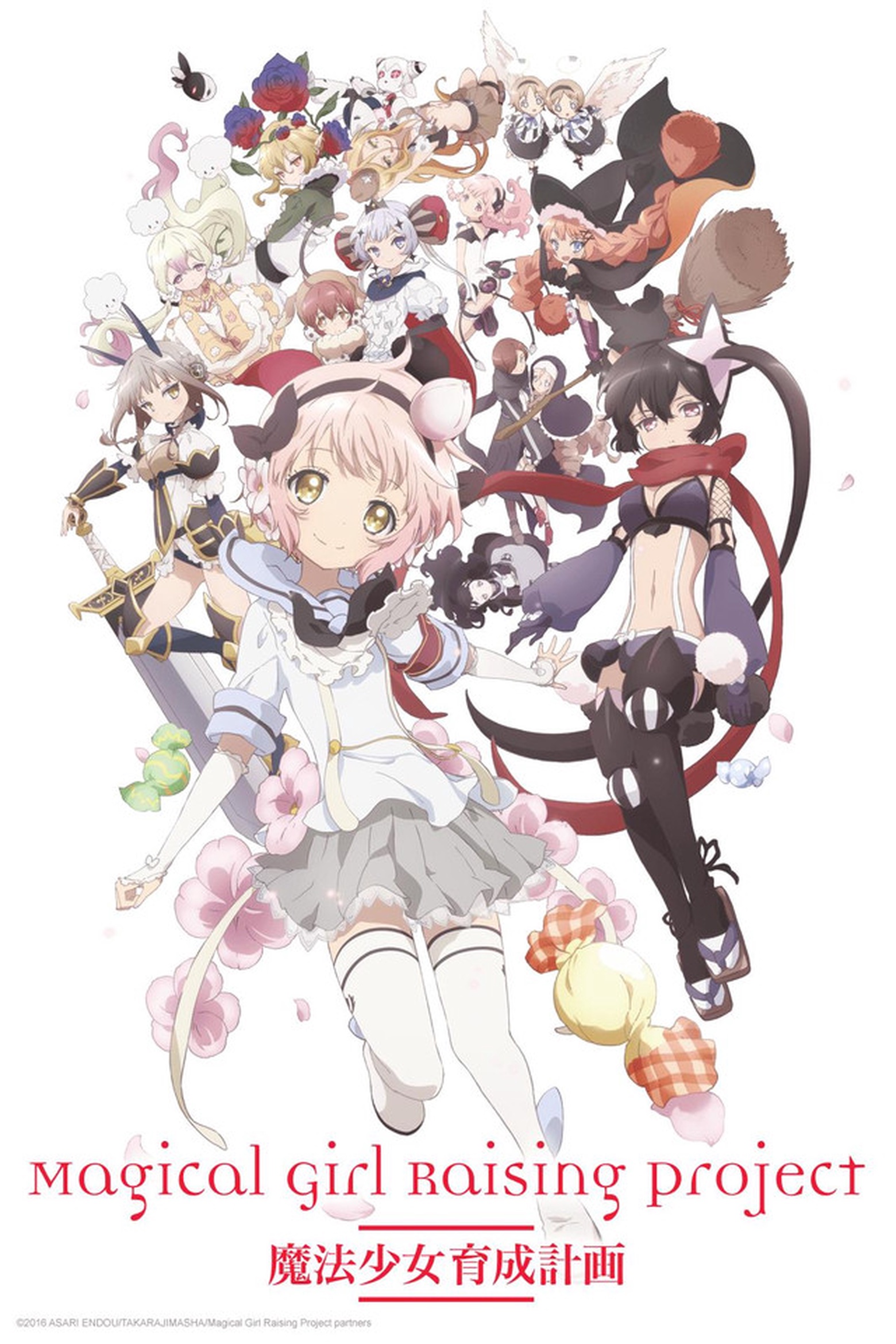
This concludes my October 19th entry in the OWLS “Grotesque” blog tour. Aria (Animanga Spellbook) went right before me with a nice and short post over the recently-aired Phantom in the Twilight that you should check out right here! Now, look out for Flow (Captain Nyanpasu) this upcoming Monday, October 22nd! Thanks for reading, and until next time, this has been
– Takuto, your host


